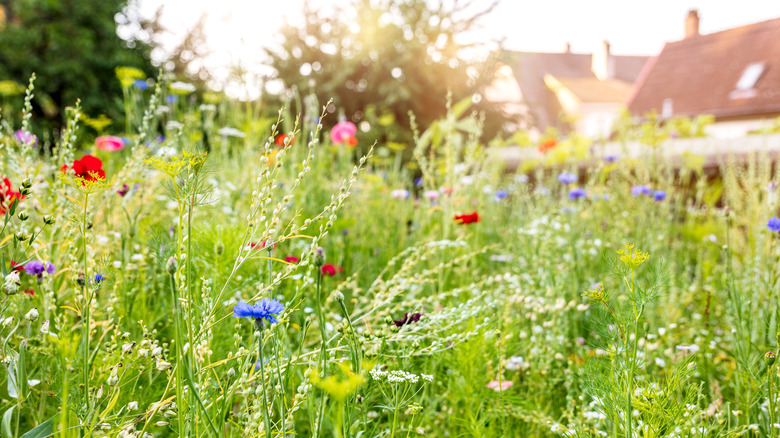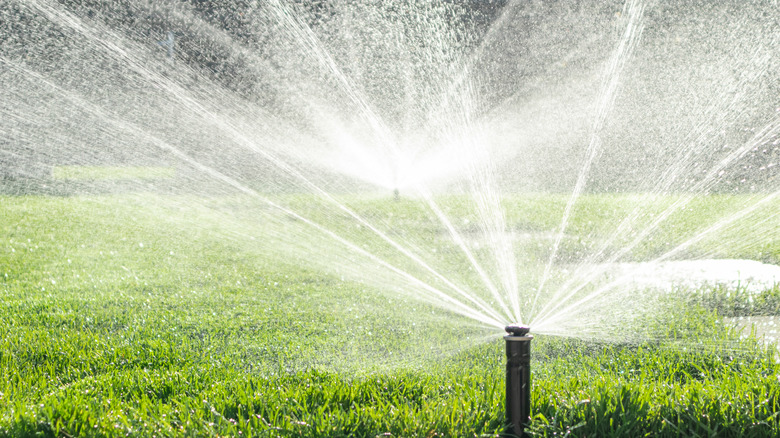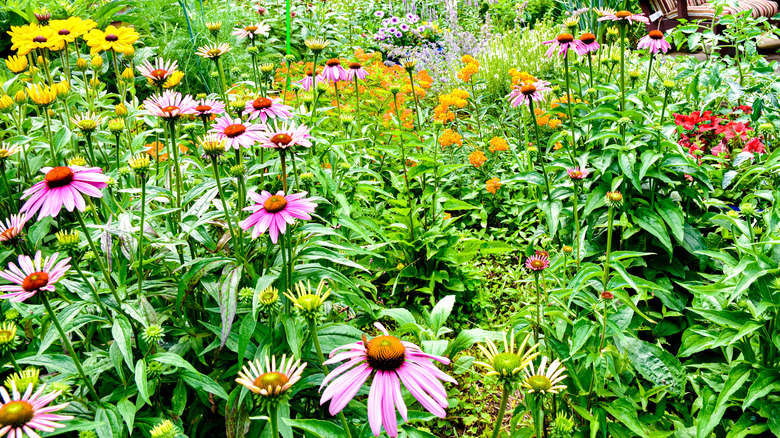The Untold Truth Of Wildscaped Lawns
The days of pristine grass lawns may be coming to an end. If you're in search of beautiful, fresh flowers to populate your garden and want to liven up your lawn, consider the practice of "wildscaping." So-called "wildscaped" lawns are those that, according to The Grass People, include wildflowers that "attract an array of bees and pollinators" with "their vibrant and versatile blooms." Though it may seem unconventional in your neighborhood, letting wildflowers and native plants grow on your front lawn helps the environment while providing a beautiful, natural frame for the wild plant life outside your home.
According to the National Wildlife Federation, "Native turf-grass alternatives can reduce your environmental footprint while supporting birds, butterflies, and other living creatures." Native wildflowers serve as the perfect alternative for those hoping to start a more sustainable lifestyle while making your home the most unique on the block. Unlike traditional gardening, wildscaped lawns are low-maintenance and require little upkeep on your part. It's truly a best-case scenario for all parties involved. Plus, you might even attract hummingbirds to your garden in the process.
Making the most of your lawn space
Most turfgrass lawns use non-native species like Kentucky bluegrass or zoysia to populate the space surrounding homes, according to the National Wildlife Federation. While these grass species may give your home the golf course look of most suburban neighborhoods, they can be a pain to maintain. Americans waste approximately nine billion gallons of water on outside upkeep every day, typically by watering their grass lawns (per the National Wildlife Federation).
Rather than rely on sprinkler systems and pesticides to keep your yard prim and proper, experts are calling for everyone to rethink the plants we put outside our homes. "We need to start considering alternatives to traditional grasses," University of Nebraska-Lincoln associate professor and turf specialist Keenan Amundsen told the National Wildlife Federation. Ditching your traditional turf lawn won't just set your home apart in your neighborhood — you'll also be forging sustainable change to help the environment just steps from your home.
How to wildscape your lawn
You can take a few different avenues to wildscape your own lawn. According to The Grass People, it's possible that your lawn may already have some native plants ready to grow as it is. If left alone, most lawns will begin growing "tall arable grasses, daisies, dandelions, and white clover," The Grass People report. Resisting the urge to mow down your yard can be tough at first, but after some time, you may be surprised by the wildflowers that have been waiting for their chance to sprout and thrive.
If letting go of your manicured lawn is too much for you at first, designate specific portions of your yard to become native plant havens. By removing some of the non-native turf grass at the edges of your lawn and replacing those patches with wildflower beds, you create a clean yet natural divider between your home and your neighbors'. According to The Grass People, the best practice for this would be "removing the top layer of turf and ensuring it remains weed-free (weeds will choke out wildflowers trying to grow)." If you want to be extra adventurous, be creative when determining the best shape for your wildflower bed: Circles, hearts, or zig-zag patterns could make your backyard look professionally landscaped.


